
METHODOLOGY OF WORKING WITH MUSICAL EXERCISES IN THE FORMATION OF THE VOICE OF A POP SINGER.
Ashurov Ma’rufjon Abdumutalibovich
Annotation: In this article, the author provides detailed information on the formation of the voice of a pop singer, the basic mode of the vocal and pop singer in the rehearsal process and methodical recommendations for the study of musical works, as well as sound exercises and their main functions.
Keywords: vocal, melody, word, content, variety, singer, vocal exercises, vocal range, defect, lesson, vocal exercises, breathing, technique.
Vocal science should be studied as a common art form. All its elements are interconnected, enrich each other and form a complex system. Vocal music is the composition of a musical instrument with or without the accompaniment of one or more singers. In most cases, vocal works are associated with words, ceremonies, or stage movements. When a melody is connected with a word, it not only reflects its meaning, but also the meaning underlying the text. Text-to-text-music relationships can be complex and changeable, but they can never be completely free in a work of art. Therefore, even if different musical compositions are written in the same text, in each of them one can find different connections between the music and the text.
In vocals, the meaning of a word is related to its means of expression, the rhythm, melody, and syntax of the melody. Rhythm, timbre, melody, articulation, height together form the language (speech) of music. These are elements not only of words but also of music. The rhythmic range includes relationships between short and long sounds, accents, sentence breaks, pauses, tempo, and syntax in general. These commonalities allow us to study and analyze the unity and difference of words and melodies.
The meaning and melody of a word, as well as all the means of expression, are inextricably linked, and they have much in common. By melody is the definition of the pitch of a melody. There are many general descriptions of the melody of speech and the melody of music. When analyzing vocal works, the first question that arises is the artistic relevance of the musical image to the character and image of the poetic or prose text. This compatibility can be generalized or detailed. The approach to the poetic text determines the character of the vocal melody, the form of the musical work. The relationship between music and text is determined by a variety of factors. This or that genre, historical period, the style of a particular composer and other factors are among them. Often, poetic texts underlie vocal works, so the poetic dimensions and the character of the poem associated with them influence the structure of the vocal melody, its rhythm and tempo. But the impact of poetry on the rhythm of music is not limitless. The rich musical potential allows the composer to interpret the rhythm of the poem in different ways. The classification of the principles of expression of a poetic text in music is based on the relationship between the weight (size) of the poem and the rhythm of speech with the musical rhythm.
The main mode of vocal and variety singer in the process of rehearsal. Well-known composer Dilorom Omonullayeva's textbook "Variety singing" for students of music and art universities, published in 2007, provides valuable information about the vocal and pop singer's vocal exercises and work on them. past In particular, this manual was widely used in the text of this report. In a pop singing class, the lesson begins with vocal exercises. Vocal exercises play an important role in the education of a pop singer, so it plays an important role in the formation and development of vocal and technical skills of the student. The total time for vocal lessons is 40-45 minutes (3 times a week), usually 15-20 minutes for vocal exercises. Practical training requires an individual approach to each student. When choosing exercises, it is important to take into account the student's musical ability and vocal preparation, vocal range and defects in the vocal apparatus.
From the very beginning, the teacher should pay special attention to the performance of the young singer. The singer has to keep his body straight and his head upright, breathe freely and sing with his legs bent. Vocal exercises should start in the middle of the range. It is advisable to gradually and carefully expand the lower and especially upper tones of the range.
You should not overdo it at the beginning of the class. When the vocal cords are tired, the student is given a 3-5 minute rest and a conversation. During the interview, the work done is analyzed, its achievements and shortcomings are identified, new tasks are identified.
In the first lessons, simple, short exercises are sung that are quickly imprinted in the student’s memory. Then, after mastering the simple exercises, they start with the more complex ones. The first exercise should focus on vocalizing vocal sounds. Experiments have shown that the A and I sounds are the most useful for a singer's growth. If these sounds are mastered correctly in lessons, the remaining E, O, and U sounds will be easier to sing. Because they play an important role in mastering vocal sounds, clarity of intonation, fluency of registers, expansion of range, free use of vocal muscles, and other vocal skills.
In each singing class, teachers have their own methodological approach to mastering these skills. We have a lot of experience in the system of educating singers, especially in Opera singing and Traditional singing classes.
It is known that in opera singing the sounds A and O are sung in a closed circle. In the case of pop singing, these sounds should be sung in a more open and folk way. After all, folk singing and traditional maqom singing embody the sounds and airways. That's why pop art is so fast and easy to understand.
Voice exercises and their main functions. The performer must approach the singing in a conscious and creative way, rather than formally repeating the vocal exercises during the singing process. To do this, when recommending a student to sing each exercise, it is important not only to sing it, but also to explain in detail its main purpose. The student will then be able to consciously direct their voice and overcome phonetic and technical difficulties easily.
The following should be observed when singing:
1. Breathing in singing at a level appropriate to the vocal specialty;
2. In singing - the correct use of articulation;
3. Development of throat (voice) muscles;
4. Achieve pure intonation;
5. Expanding the range of sound;
6. Acquisition of all singing techniques: cantilene, staccato, non-legato, supporting sound (opyortiy zuvuk), falset, sound recording, sound dynamics (forte, piano);
7. Mastering all the technical aspects of pop singing.
First and foremost, make sure the sound is free and full in the middle of the range. You can then move on to singing the highs of the range.
During the work, the teacher must be very alert, take the necessary measures in a timely manner, noticing that the throat is constricted, the articulation is in the wrong position, and especially the fatigue of the voice. During the lesson, the student will be able to perform all types of vocal exercises with closed lips in the "M" (closed) sound, open vowel sounds and legato, staccato, arpeggio, intervals, gammas, small melodies (popevka) in combination with vowels and consonants. nicks should be formed.
It is well known that every teacher has his or her own way of developing voice through vocal exercises based on his or her personal experience and perspective. It is recommended to improve your work style by making effective use of the vocal exercises and methodological recommendations summarized in this guide. It is well known that every teacher has his or her own way of developing voice through vocal exercises based on his or her personal experience and perspective. It is recommended to improve your work style by making effective use of the generalized sound tuning exercises and music provided in the science program in this guide. This is because the exercises given for this singing and the methodological recommendations for their application are based on many years of experience of reputable musicologists. We recommend vocal exercises that meet pedagogical requirements for sound tuning.
This exercise is part of the mouth-closing ("M" sound) exercise, which focuses on the correct breathing and resonant sound.



Exercises for breathing and smoothing out vocal sounds. You can replace the "Ya" sound with the "Yo" sound.





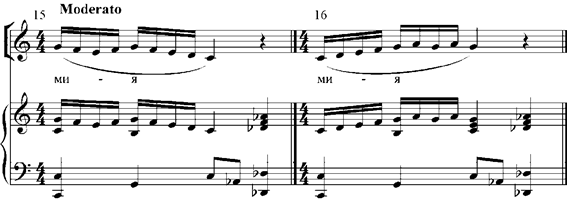
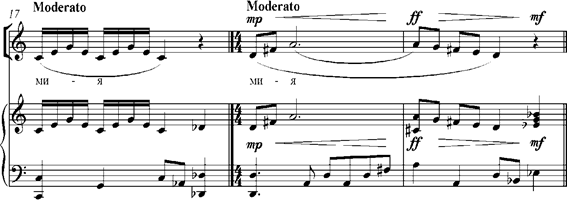
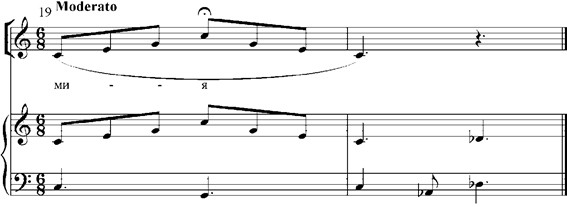

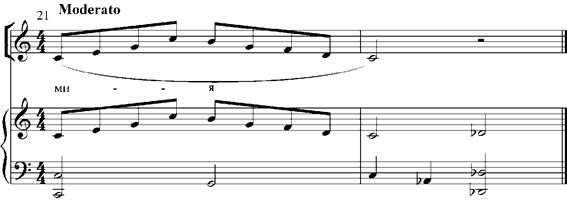
Exercises for the development of articulation and breathing techniques (staccato). An exercise aimed at using the diaphragm and working on pure intonation.


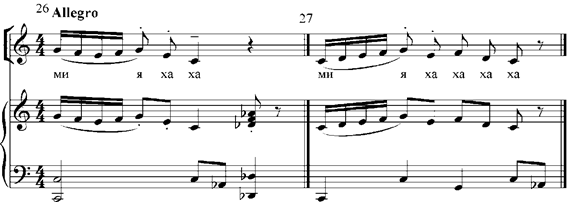
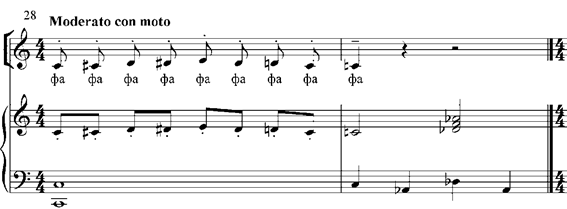
Exercises for the development of sound technique. This machine is required to perform in one breath.



Work on the cantilever.

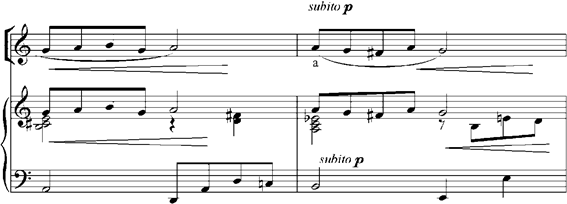

Methodical recommendations for the study of works. Before we talk about the individual interpretation of each song, we need to focus on the general style of performance.
First of all, the students-performers should understand the content of the poetic text of the song and the images expressed in it. Each song has a specific compositional structure. This compositional structure is connected with the poetic content, and the form of many songs is written in two parts, that is, in the form of a couplet. The main idea of the song is summarized in the introduction. The refrain plays a central role in the song because the main idea of the text is embodied in the refrain.
The ideological content of the poem is expressed in the structure of the musical melody. Music and lyrics are closely intertwined. The student-performer should be reminded that in the performance of the song, the singer should pay special attention to the poetic text, and in the performance should pay special attention to the articulation of the artistic image and psychological conditions. This, of course, requires great vocal-technical and artistic skill from the performer.
Many years of creative and pedagogical work have shown that some students perform amateur songs without fully understanding the content of the song, without absorbing it into the whole body, without understanding the artistic image depicted in it, without perfecting the performance. As experienced teachers have always pointed out, even now it is necessary to pay special attention to good pronunciation, clear and accurate expression of words to the last letters, and the gradual formation of the ability to perform at a high artistic level.
Proper breathing is very important in the art of vocal performance. The skillful expression of the song depends on the breath. Breathing should be done in such a way that the content of the poem and the meaning of the words are not distorted, taking a deep breath and trying to finish the sentence. It is important to pay attention to the integrity of the sentence or its specific part, ie the phrase, and not to distort the logic of the word.
The image structure of a song always requires a high level of skill from the performer. There are three main types of songs in the guide called Variety Singing:
a. lyrical and dramatic songs in the spirit of patriotism;
b. psychological lyrical-dramatic songs expressing the sufferings of love;
c. deeply philosophical songs reflecting high human ideas are analyzed.
These three types of songs require the singer to create a coherent image from the beginning to the end of the song. In doing so, the performer must try to get to the heart of the image.
We would like to highlight one of the most important professional skills that a pop singer must acquire during his studies. That is, to learn how to play a song in a new, modern style. This is the most sophisticated technical tool in pop vocal performance.
Every young singer begins his acting career with imitation. He began to perform the songs of his favorite singer, and later his own songs in the way of imitation that he had learned. At the same time, performing songs in the same way as the way of those singers requires a large range of voices, complex national moans and chants, a high technical level of sound, and the ability to show their talent accordingly. In fact, in recent years, many young people working in the style of famous pop stars have become known and live in the pop scene. It is such a complex and responsible skill that it needs to be formed from a young age, that is, from the time of teaching at the lyceum and college levels.
The young performer is required to try to create his own individual way of performing, which is different from other singers, that is, a new pop image that is unique and compatible only with his voice, talent.
In addition to the above, there are the following skills that should be acquired during the study process:
a. work on supportive breathing («opornoe dixanie»), creating a singing airway;
b. grinding of sounds of lower, middle and upper tessitura (viravnivanie);
c. to develop the ability to direct the voice at a high level ("cantilena");
d. development of national and modern pop rhythmic singing skills;
e. to move the muscles of the body during the performance in accordance with the style of the song.
During the study, it is necessary to take into account the period of mutation (transition to the next stage of voice development, change) in the formation of voice in adolescents, especially boys in high school and college.
According to these requirements, pop songs are performed with different styles and characters, technically different (soda and complex). Songs for a small range of voices: "I will not give you to anyone", written for men's voices, requires a large range of voice, technical and artistic skills from the performer.
The song, which begins with the lower scenes, gradually develops and is filled with excitement and enthusiasm in a dramatic state in the chorus. During the work with the student, he is required to work on pronunciation, clearly expressing this dramatic situation, the poetic content.
The song requires a high level of performance skills from the singer, as it embodies a broad and purposeful integrity.
List of used literature:
1. Alchevsky G.A.Tables of breath for singers and their application to the development of basic qualities of the voice. Study guide, "Planet of Music", 2014
2. Ashurov M.A. Vocal and modern music. Textbook.-Fergana: "Polygraph super service" 2020. -340 p.
3. Glinka M.I.Exercises for improving the voice. Singing school for soprano. Doe, Planet 2016
4. Mitrofanova D.A. Italian language for vocalists. Phonetics in singing. Tutorial. Doe 2014
5. Pirmatov Sh. Basics of vocal technique. Study guide. T: -2011
6. Pirmatov Sh. The art of singing. Textbook. T: -2011
7. Pluzhnikov K.I.Matilda Marchesi's Vocal School. Women's voices. A modern look. Pedagogical repertoire. Composer - St. Petersburg, 2014
8. Shaposhnikov S. Vocal revelations. "Composer - St. Petersburg" (2013)
9. Smelkova TD Savelieva Yu. V. Fundamentals of teaching vocal art. Doe, Planet of Music, 2014
10.
Материалы на данной страницы взяты из открытых источников либо размещены пользователем в соответствии с договором-офертой сайта. Вы можете сообщить о нарушении.